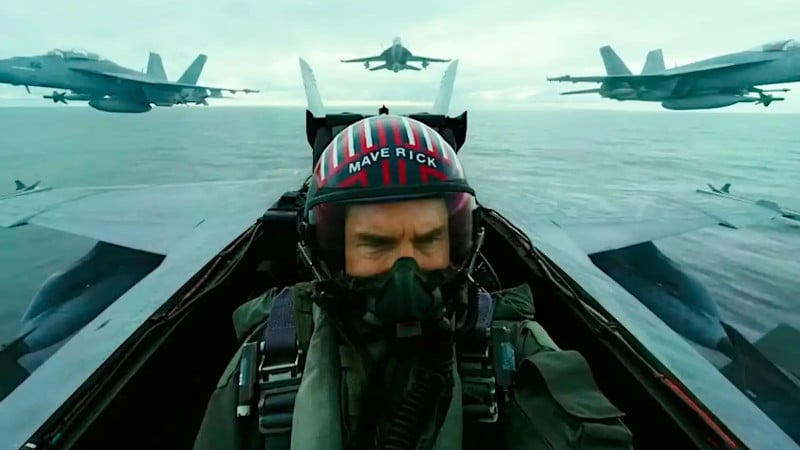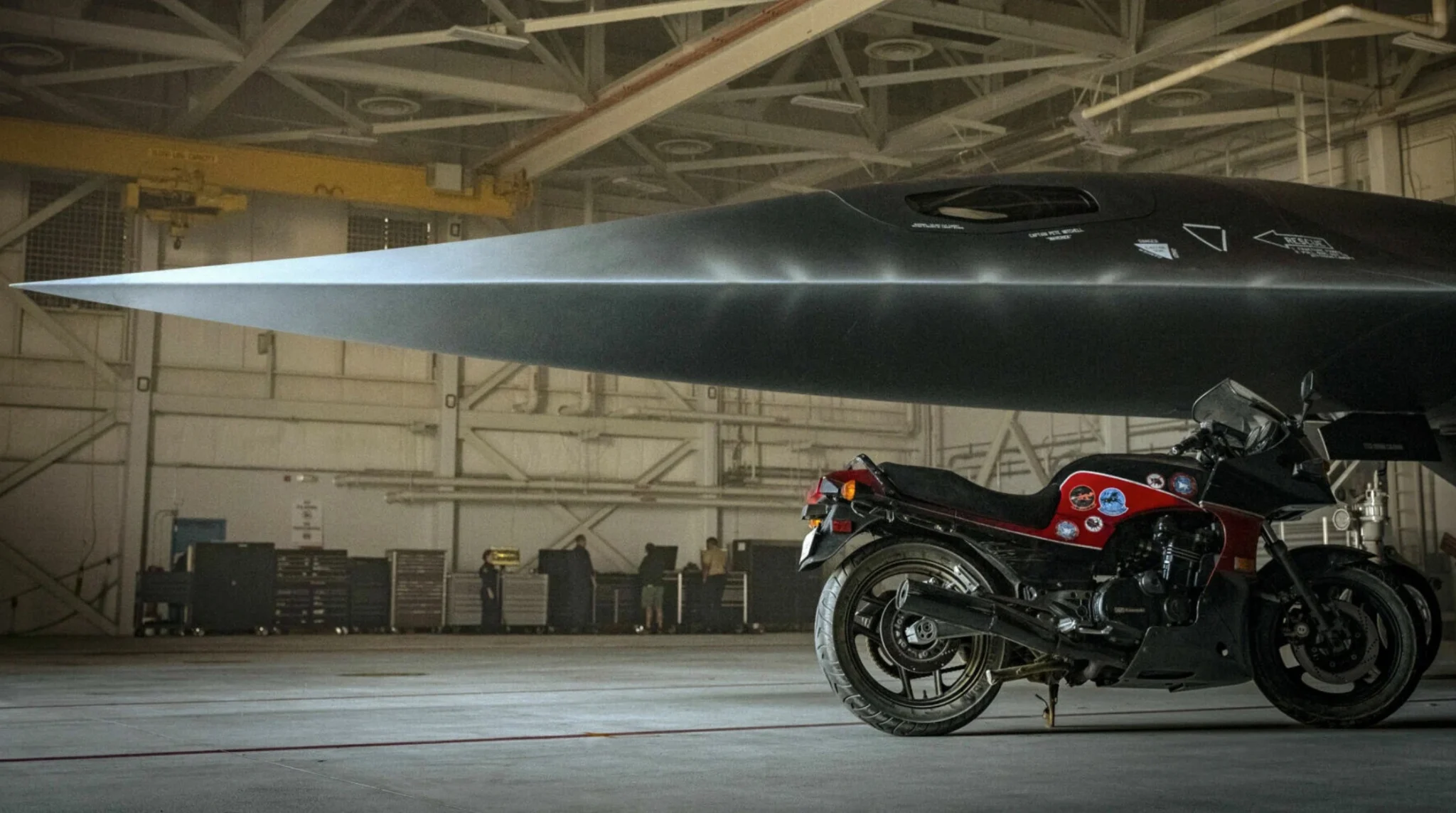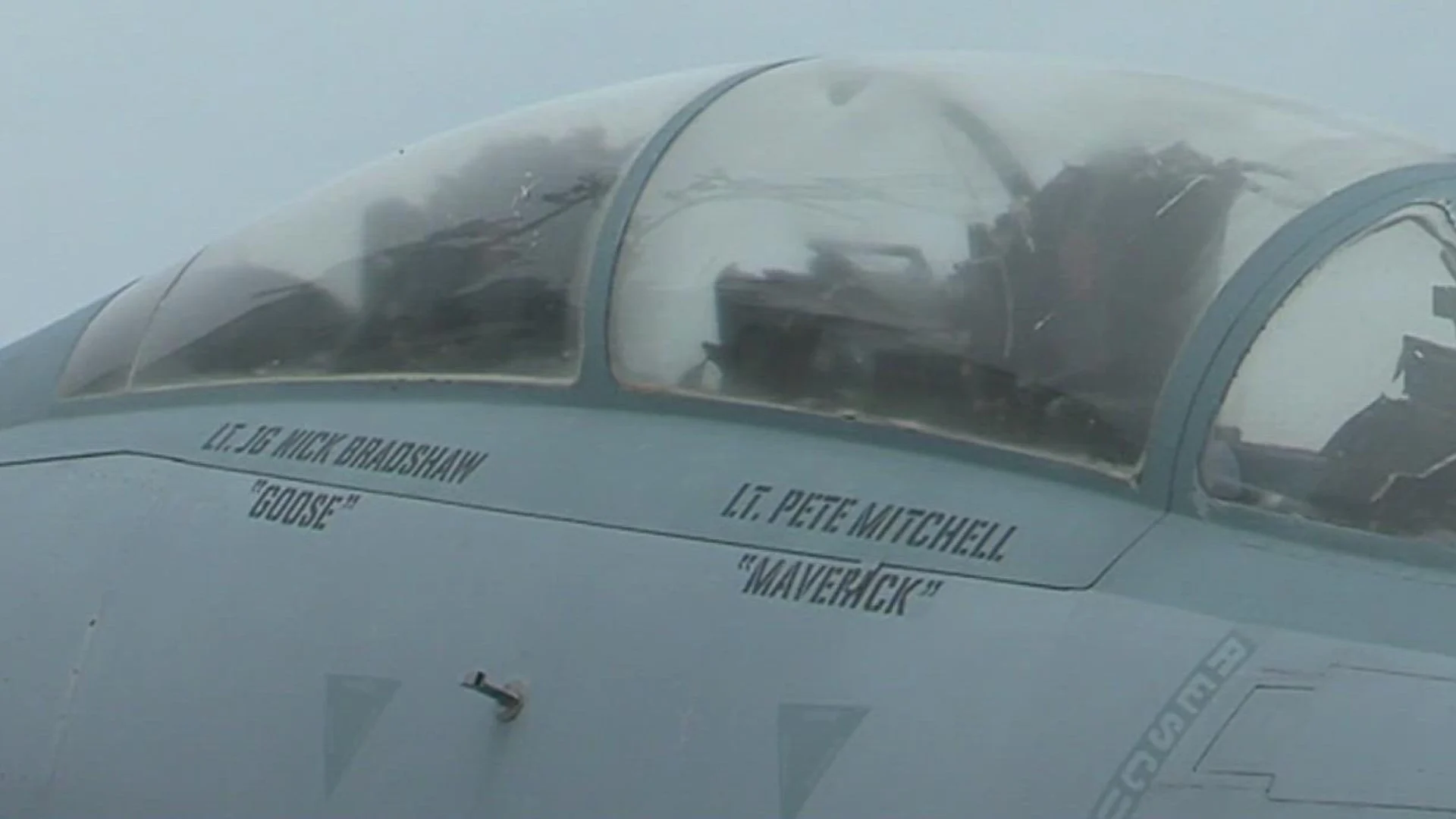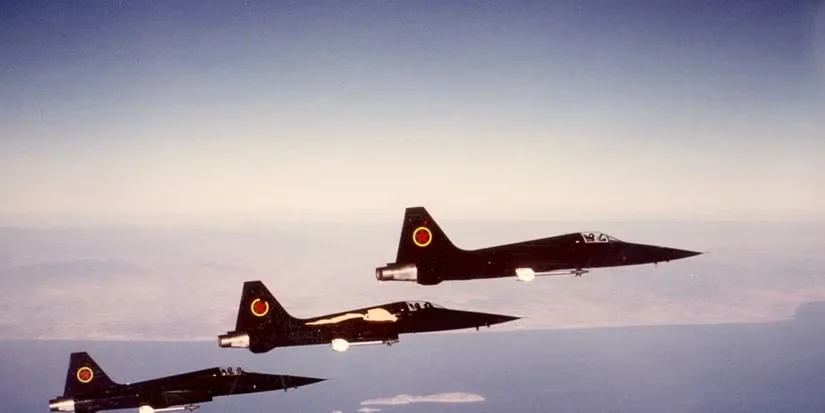
‘Top Gun: Maverick’ is packed with thrilling action sequences, but some moments take liberties with reality – bending the rules of physics, proper procedures, and what aircraft can actually do. If you’re a fan of the film and military aviation, you might notice these details. We’ve collected the most discussed mistakes and unbelievable scenes. Keep an eye out for them when you watch the movie again!
Hypersonic Ejection That Wouldn’t Be Survivable

In the movie, Maverick manages to eject from his plane while traveling at ten times the speed of sound and walks away with only minor burns. However, this isn’t realistic. At that speed, the extreme heat and pressure would likely destroy a person and most ejection systems before a parachute could even open. Current ejection seats are designed for much slower speeds, and even successful high-speed ejections usually result in serious injuries. While the scene is exciting, it stretches the bounds of what’s physically possible.
Hypersonic Canopy and Airframe Heating

The Darkstar aircraft showed only minor heat damage after flying at ten times the speed of sound. Normally, such extreme speeds create intense heat, requiring special materials or cooling systems – and even then, windows are a significant engineering problem. The fact that the canopy remained clear and undamaged during the flight is highly improbable, as the video doesn’t fully demonstrate the severe heat stress these kinds of speeds create.
Super Hornet’s 10-G Pull-Up With Full Stores

The movie’s final scene shows F/A-18E/F Super Hornets sharply pulling up after dropping their weapons, experiencing forces of over 10 Gs. While the aircraft is designed to withstand high stress, and pilots are trained to avoid extreme G-forces, the maneuver depicted is unrealistic. Pilots wear special suits to help them handle G-forces, but staying conscious and keeping the plane intact during such a sharp pull-up is improbable. The visual effect looks impressive, but it doesn’t align with the physical limitations of the aircraft and pilots.
Time–Speed–Distance Math in the Canyon Run

The times, distances, and speeds displayed during low-level training flights don’t quite match up realistically. While ground speed changes with turns, wind, and how the terrain affects radar, the recorded times seem too precise for the actual distances flown. The speeds shown with those tight turns would mean the flights covered more ground than indicated, making the timing even more inaccurate. Essentially, the filmmakers prioritized a dramatic pace over accurate navigation calculations.
Cold-Starting an F-14 Without External Support

In the movie, Maverick and Rooster quickly start up an F-14 fighter jet on an enemy runway. Historically, this type of plane needed external power and air to get running, and a thorough check by ground crew. The fast, solo start shown in the film isn’t realistic – it’s a cool cinematic moment, but it’s definitely a product of movie-making.
F-14 Takeoff Performance From a Short, Damaged Runway

The F-14 takes off from a damaged, short runway located in the mountains. Its ability to lift off depends on its weight, altitude, and engine power. Typically, heavier jets like this one need catapults for takeoff, but here, it’s relying on the runway itself. Taking off quickly with a lot of weight and limited runway space is risky, potentially affecting how quickly it can lift off and gain altitude. The way the takeoff is shown suggests the F-14 has more power available than it probably does in reality.
Mixed-Bag Enemy Inventory and Basing

Our potential enemy has modern fighter jets, sophisticated anti-aircraft missiles, and surprisingly, still uses operational F-14s, all based at a facility in a snowy mountain range. Very few countries ever flew F-14s, and keeping them in service requires rare parts, specialized tools, and highly trained maintenance personnel. Having both these older planes and the latest stealth aircraft at the same base is unusual and unlikely in the real world. This setup seems more for specific, dramatic scenarios than a realistic depiction of their military capabilities.
Carrier-Deck Procedures Compressed for Drama

The movie speeds up the process of preparing for and launching planes. Normally, there’s a careful, step-by-step procedure with lots of crew members, signals, and safety checks before takeoff. To keep the film moving quickly, these steps are shortened or changed, making things happen faster than they would in real life. While this creates excitement, it doesn’t accurately show how things work on an aircraft carrier flight deck.
Radio Calls and Brevity That Don’t Quite Track

During the mission, communication isn’t always perfectly standard, and responses might not be timed as they would be in a real situation. While there are established, short codes to save time and avoid confusion, the dialogue often prioritizes being clear for viewers over using those codes strictly. You’ll also hear overlapping conversations and longer sentences than controllers would typically allow. This helps keep the audience following along, but it doesn’t quite match the fast-paced, concise communication you’d hear in a real cockpit.
G-LOC Portrayals and Rapid Recovery

Training videos depict pilots briefly losing vision due to intense G-forces, then quickly regaining it to continue flying. Although techniques and special suits help, pilots can still lose consciousness for a few seconds under high G-forces, and it takes longer to fully recover. During this vulnerable period, the aircraft could become difficult to control. The film shows these situations, but the pilots recover more quickly and easily than would usually happen in reality, highlighting the danger while minimizing the potential consequences.
Share your favorite eagle-eyed catches from ‘Top Gun: Maverick’ in the comments!
Read More
- Bitcoin’s Ballet: Will the Bull Pirouette or Stumble? 💃🐂
- Can the Stock Market Defy Logic and Achieve a Third Consecutive 20% Gain?
- Dogecoin’s Big Yawn: Musk’s X Money Launch Leaves Market Unimpressed 🐕💸
- Deepfake Drama Alert: Crypto’s New Nemesis Is Your AI Twin! 🧠💸
- LINK’s Tumble: A Tale of Woe, Wraiths, and Wrapped Assets 🌉💸
- SentinelOne’s Sisyphean Siege: A Study in Cybersecurity Hubris
- XRP’s Soul in Turmoil: A Frolic Through Doom & Gloom 😏📉
- Binance’s $5M Bounty: Snitch or Be Scammed! 😈💰
- Ethereum’s $140M Buy: Will It Save Us? 😱
- ADA: 20% Drop or 50% Rally? 🚀💸 #CryptoCrisisComedy
2025-11-12 17:16